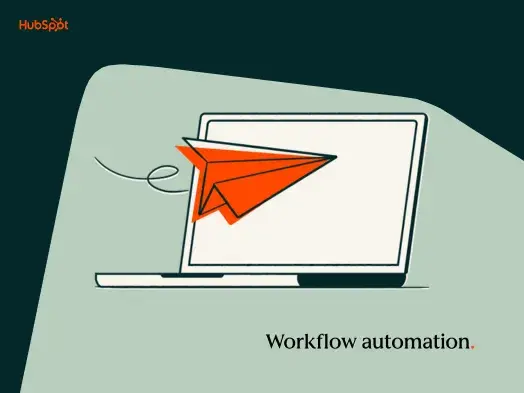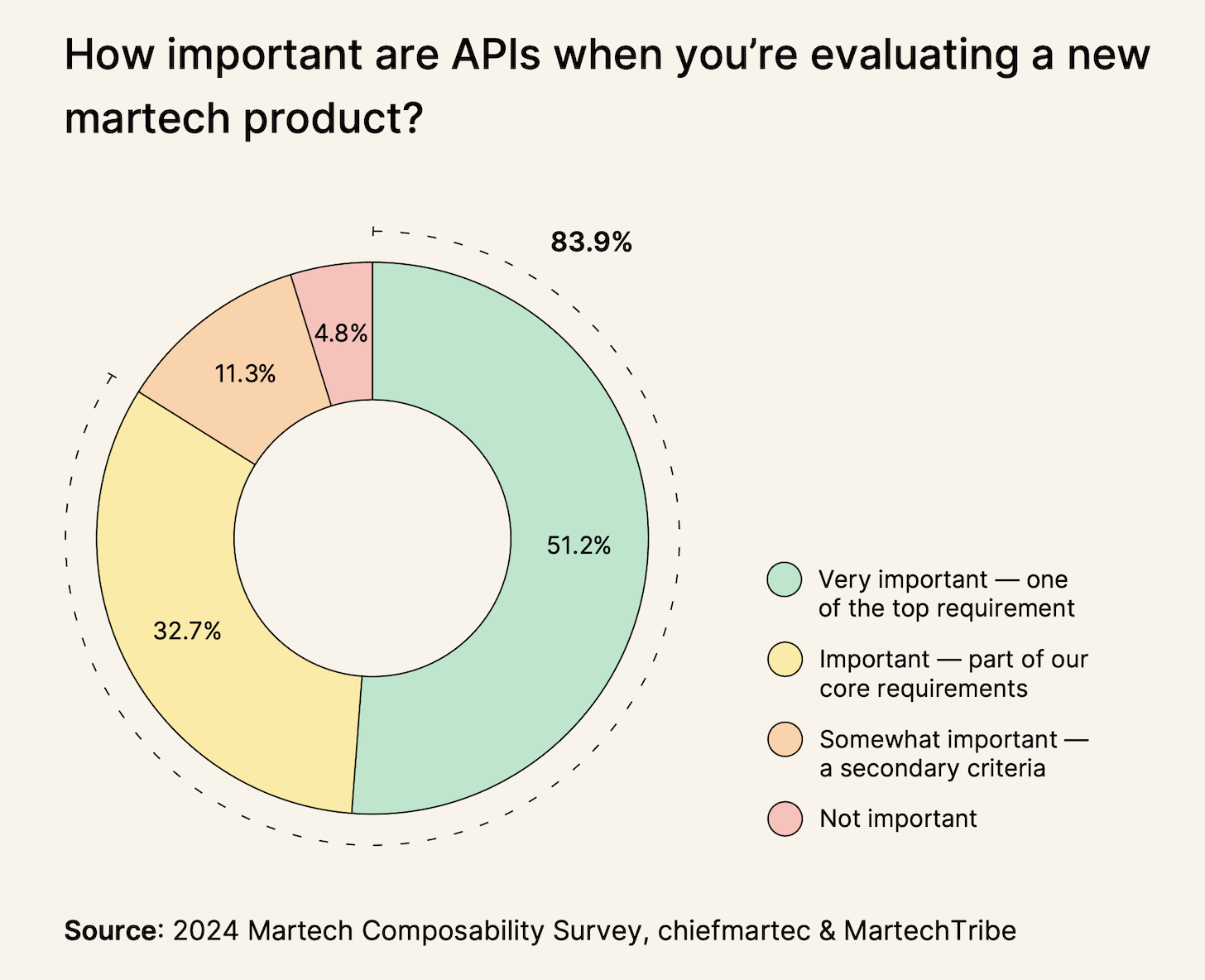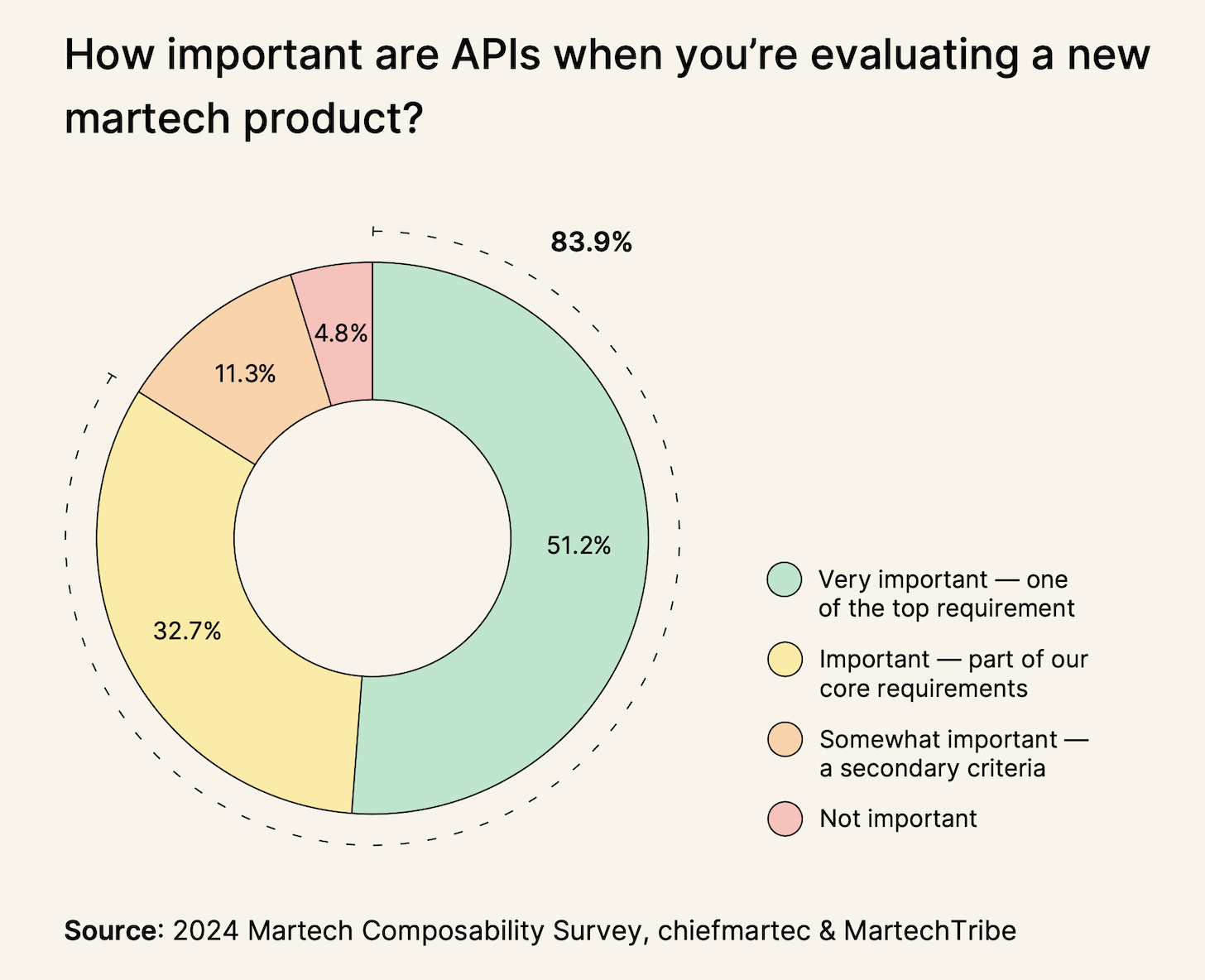
Take a guess at filling in the blank here:
_______ is to AI Agents as Data is to AI Models
The answer, as you likely surmised from my headline, is APIs. Let’s discuss why…
Data is the differentiation in AI models
For the past year and a half, the hyper hype cycle of AI madness has agreed on only one clear truth: data will be your most strategic asset in the Age of AI.
LLM AI engines from OpenAI, Google, Anthropic, Meta, et al., are ultra-powerful — but increasingly commoditized. Anyone can use them. Competitive advantage at the model level is only achieved by combining these engines with a craft cocktail of 1st-party, 2nd-party, and 3rd-party data that your business uniquely brings together.
This has led to two near-universal recommendations:
First, develop a strategy for defining and acquiring data as a core competency of your business, continually inspired by new, creative use cases that such data enables.
Second, get your data infrastructure in shape to efficiently collect, aggregate, and apply that data across your tech stack at speed and scale.
This is solid advice.
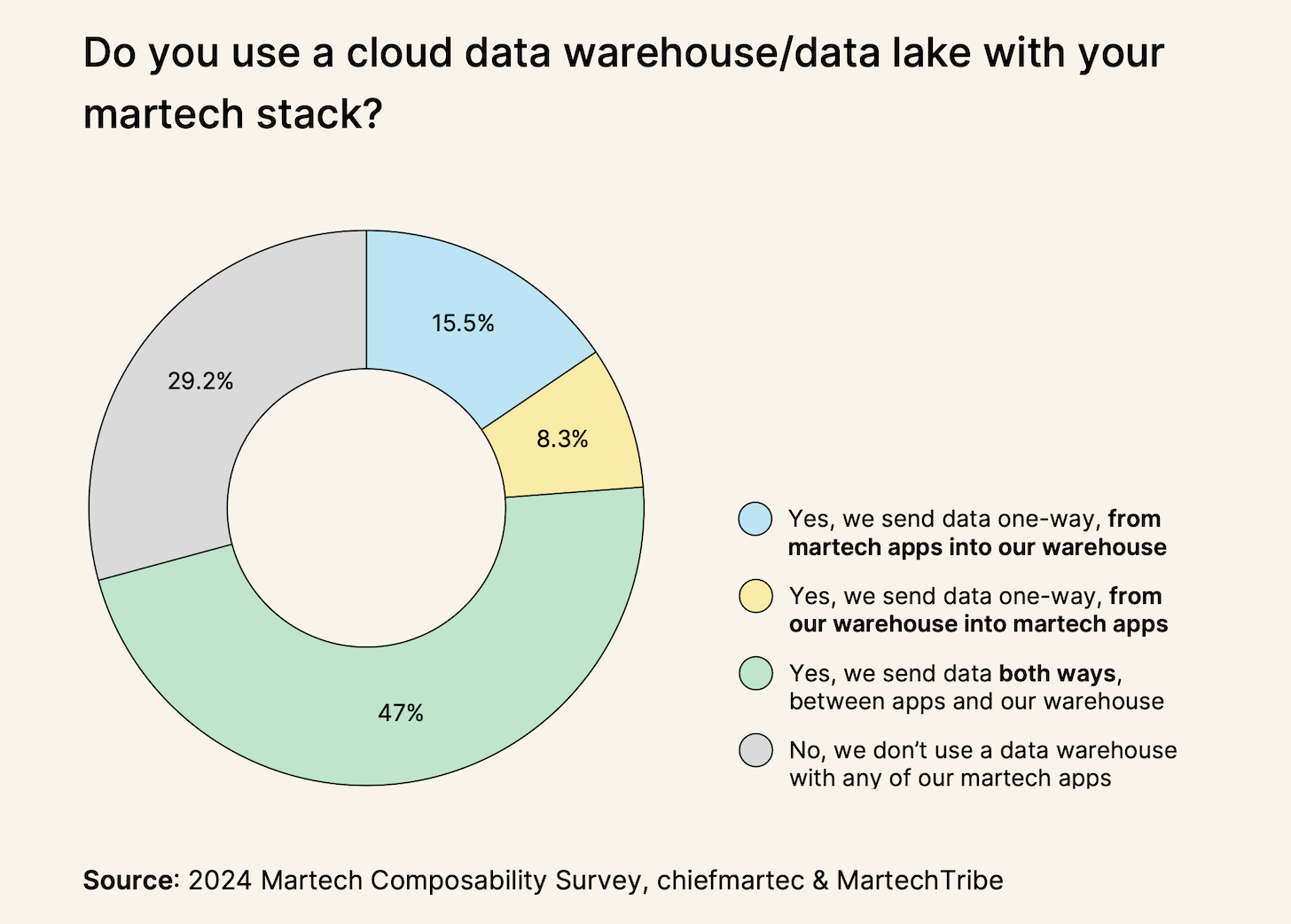
It’s one of the reasons there’s been an acceleration of data warehouse adoption in martech stacks, serving as an “aggregation platform” for data across the business. In our recent State of Martech 2024 report, 70.8% of marketing ops leaders said they’re now using a cloud data warehouse/data lake with their martech stack.
Of those who have adopted a cloud data warehouse/data lake, 61.3% say the majority of their martech stack (e.g., more than 50% of all martech apps) is now integrated with that data platform. These companies are well positioned to bring the right data to the right AI models in the right apps.
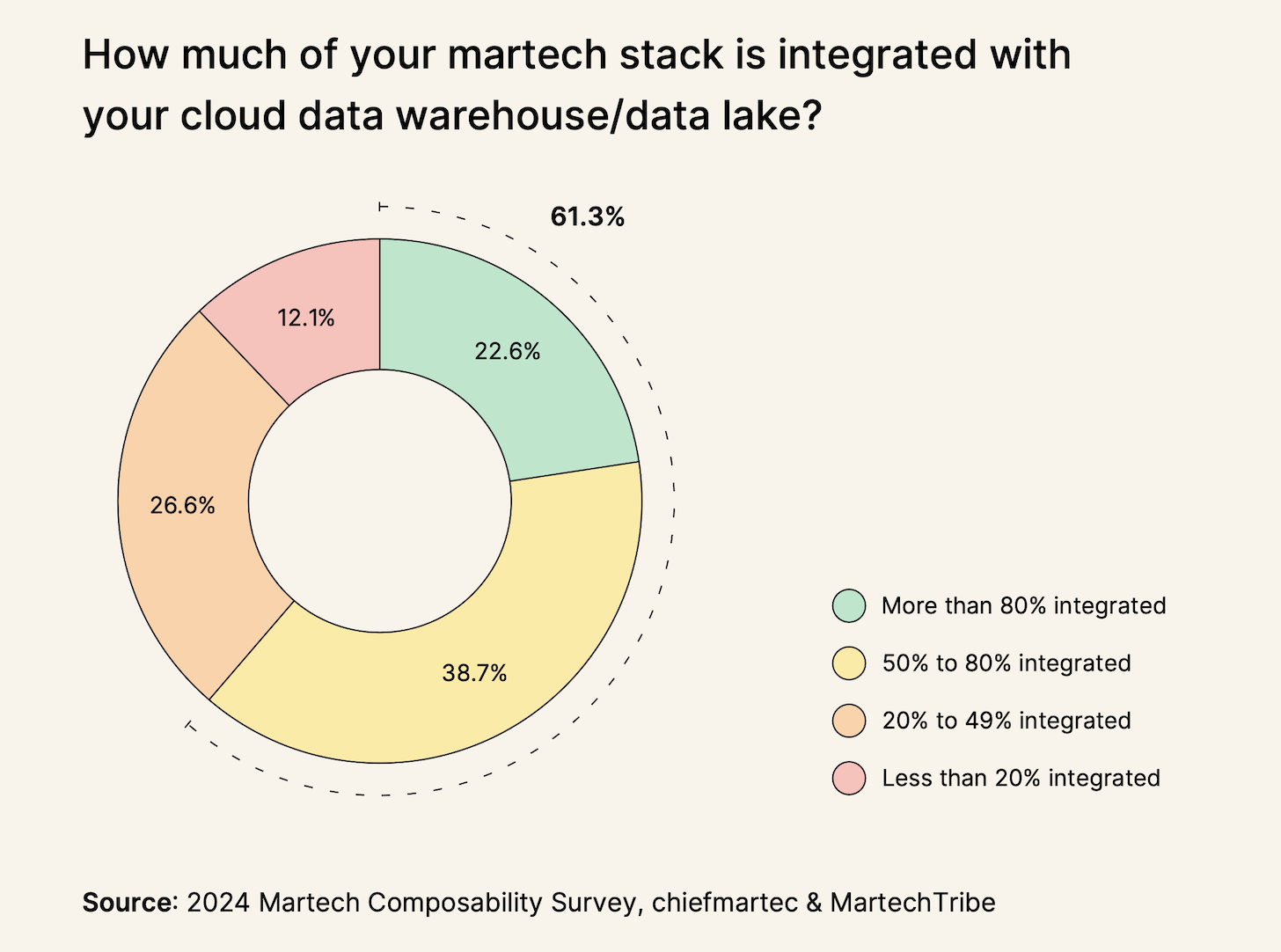
But moving data around is just the beginning…
Answers and automations prefigure AI agents
The first wave of generative AI chatbots and co-pilots largely acted as call-and-response oracles. Ask questions, get answers. If you wanted to do something with that answer, it was largely up to you to provide the action.
Now, over the past year, we’ve started to see generative AI features added to individual products that could perform tasks upon request. Ask the AI assistant in HubSpot to remix a blog post into multiple content channels and formats. Ask Firefly in Adobe Photoshop to change plain lettering to tiger fur in an illustration. Ask the AI copilot in Excel to create a visualization from a table of data in your sheet. There’s a ton of such AI-enabled wizardry being rolled out in pretty much every app in your stack this year.
These are cool features, for sure! But they’re mostly self-contained within their respective apps. The developers of those apps have the ability to connect all the right wires inside their code to enable this. But most of them haven’t exposed all those wires to the outside world — via APIs — to let other apps interact with theirs this way. Yet.
As the chart at the top of this post showed, APIs are already important or very important to 83.9% of martech buyers. In fact, for 51.2% of those buyers, APIs are one of their top requirements when evaluating a new martech product.
One of the key drivers of this was demand from martech and marketing ops leaders to be able to automate workflows across multiple tools within their martech stack.
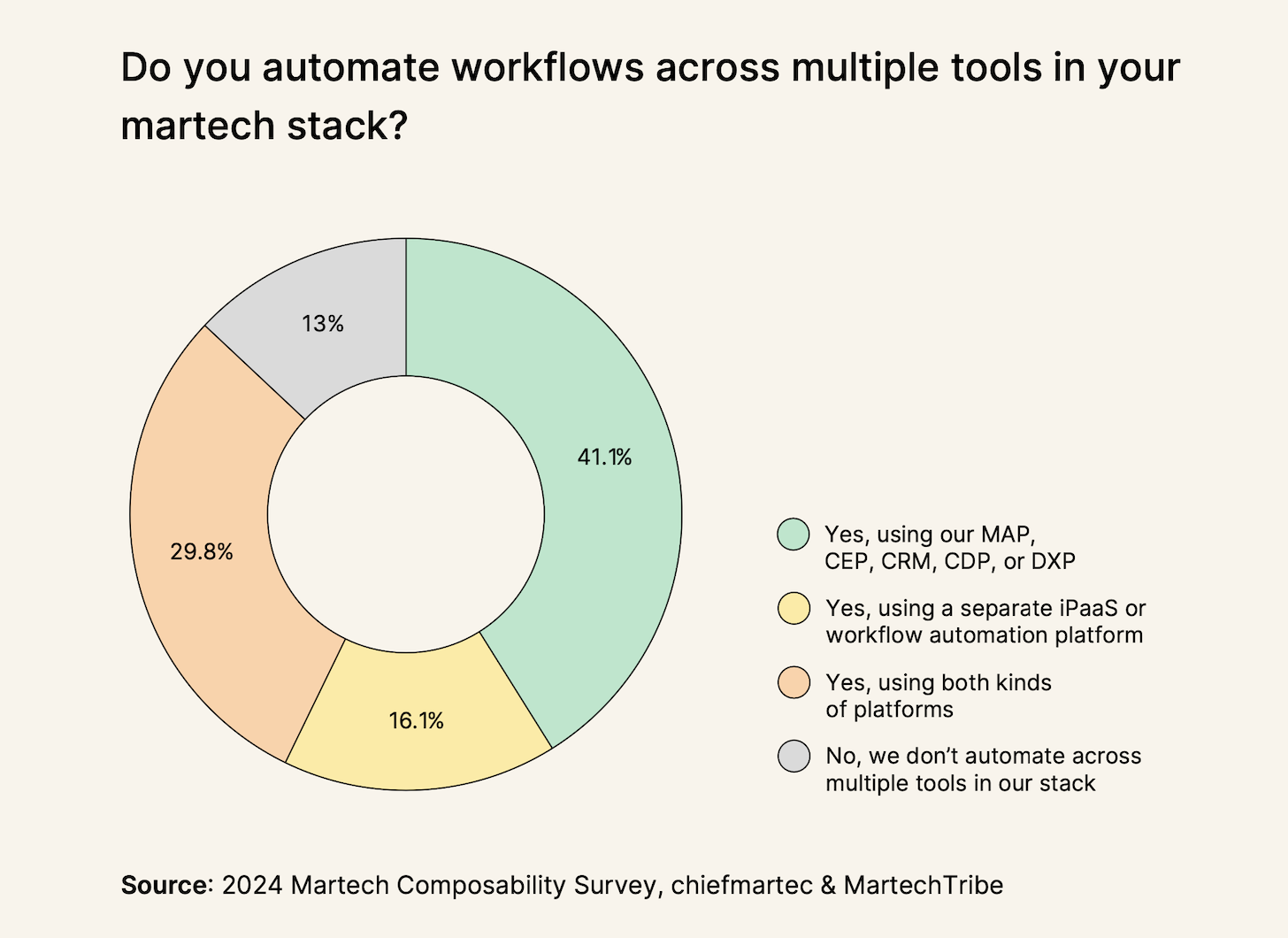
A classic example: A prospect fills out a form on your website, you send them an email with an asset, you add or update their record in your CRM, you score them and put them in the proper nurturing campaign in your marketing automation or customer engagement platform, and you maybe even Slack an alert to a sales or customer service team.
You might orchestrate these automations through your primary martech platform — the preferred three-letter acronym of CRM, MAP, CEP, CDP, or DXP at the center of your stack — which is what 41.1% of marketing ops people do today. Or you might use a stand-alone iPaaS or enterprise automation platform, such as Workato, Make, or Zapier, which 16.1% do. Or use a combination of both, which 29.8% do.
One way or another though, 87% of marketing teams are automating across multiple tools in their stack.
The only constraint? A product must expose functionality via an API to let it be automated by a separate software program. (Yes, technically speaking robotic process automation, RPA, can “fake” human interaction through a UI instead of accessing an API. But that’s a rather primitive and fragile approach, mostly used as duct tape over legacy apps from last century.) Hence the demand for more APIs.
Well, actually, APIs aren’t the only constraint.
The other real constraint is that all these automations have had to be manually built and maintained. A human — typically a marketing ops person — had to spell out step-by-step instructions for the automation. This has gotten easier over the years, thanks to no-code interfaces. But still. There’s only so many deterministic flow diagrams a single person can reasonably build and maintain.
Automation itself was, ironically, not very automated.
AI agents are the next frontier for API leverage
That’s about to change.
The vision for AI agents is the ability for a human to give them higher-level goals — “help turn leads from my website into open opportunities for sales” — and have them iteratively and autonomously do their own internal cycle of ask, answer, take action, repeat to achieve that goal.
They can figure out on their own which responses to a web form should go into which nurturing campaign and which ones require a salesperson to be notified immediately. They can sync up all the right data across all the right systems.
This isn’t far-off science fiction. This is already starting to happen today, with AI agents demonstrated in workflow automation tools. The technology is advancing quickly, and I expect that in a year from now, AI agents will be proliferating across the martech stack.
By letting AI orchestrate workflows and experiences across our martech stack, I believe we will reverse the curse of martech underutilization. The ability for us mere mortals to learn and apply all the capabilities that advanced martech products now offer has become the limiting factor in how much of this power we’re effectively able to tap. AI agents will lets us leverage much more complex marketing operations through much simpler UI.
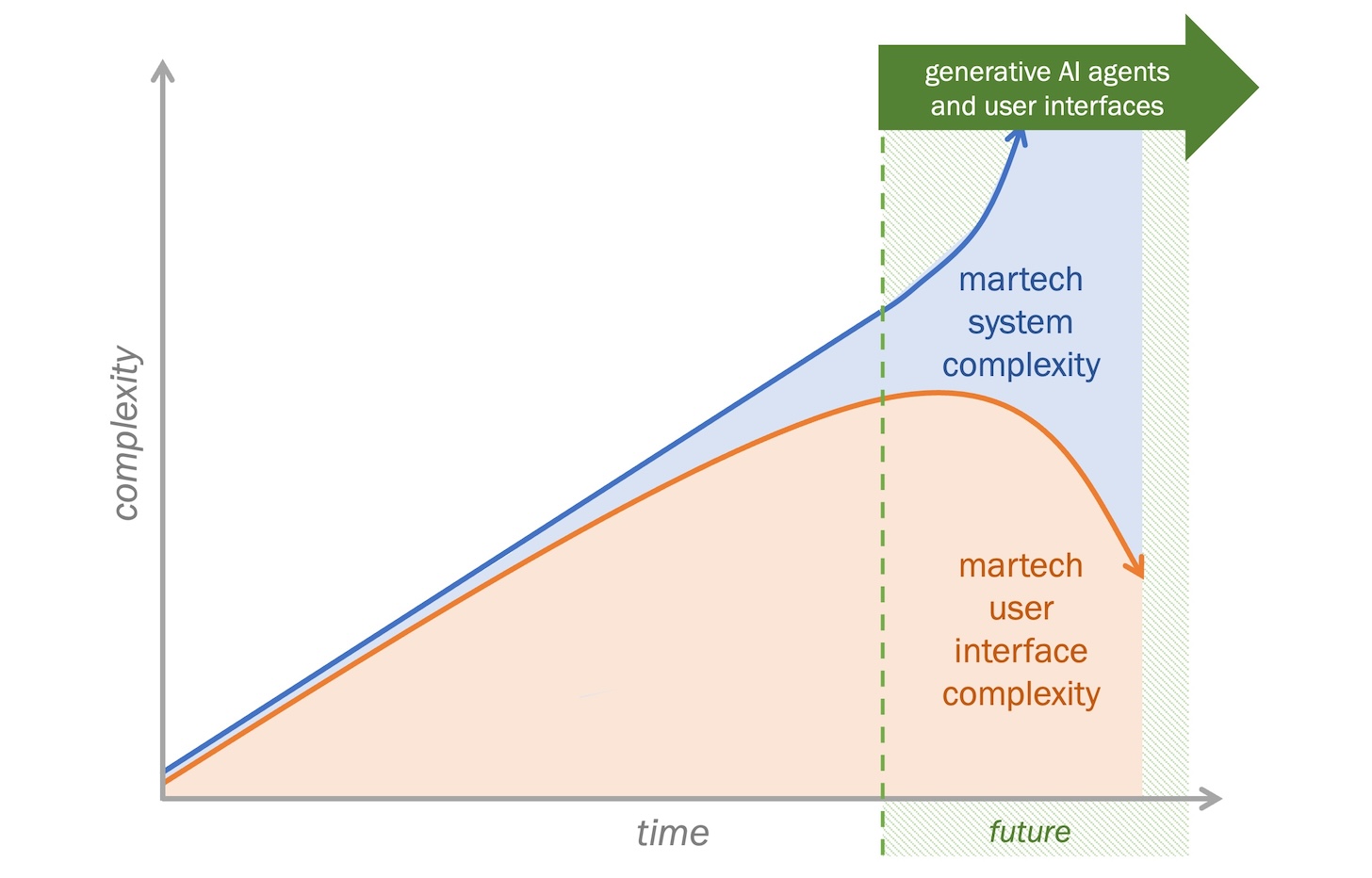
There’s only one catch.
Like the iPaaS and enterprise automation tools before them, AI agents can only interact with those apps that expose their functionality via APIs. (As with RPA, there’s a caveat that AI agents could also “fake” interactions with human-oriented UIs. But it’s a fragile and imprecise approach that does not lend itself to robust and reliable digtial operations inside a company.)
AI agents are going to drive demand for APIs through the roof.
And while most martech products have certainly improved their API coverage over the past few years, only 17.3% of the platforms marketers have at the center of their stack are rated as having great API coverage, enabling marketing ops to do everything they want via APIs.
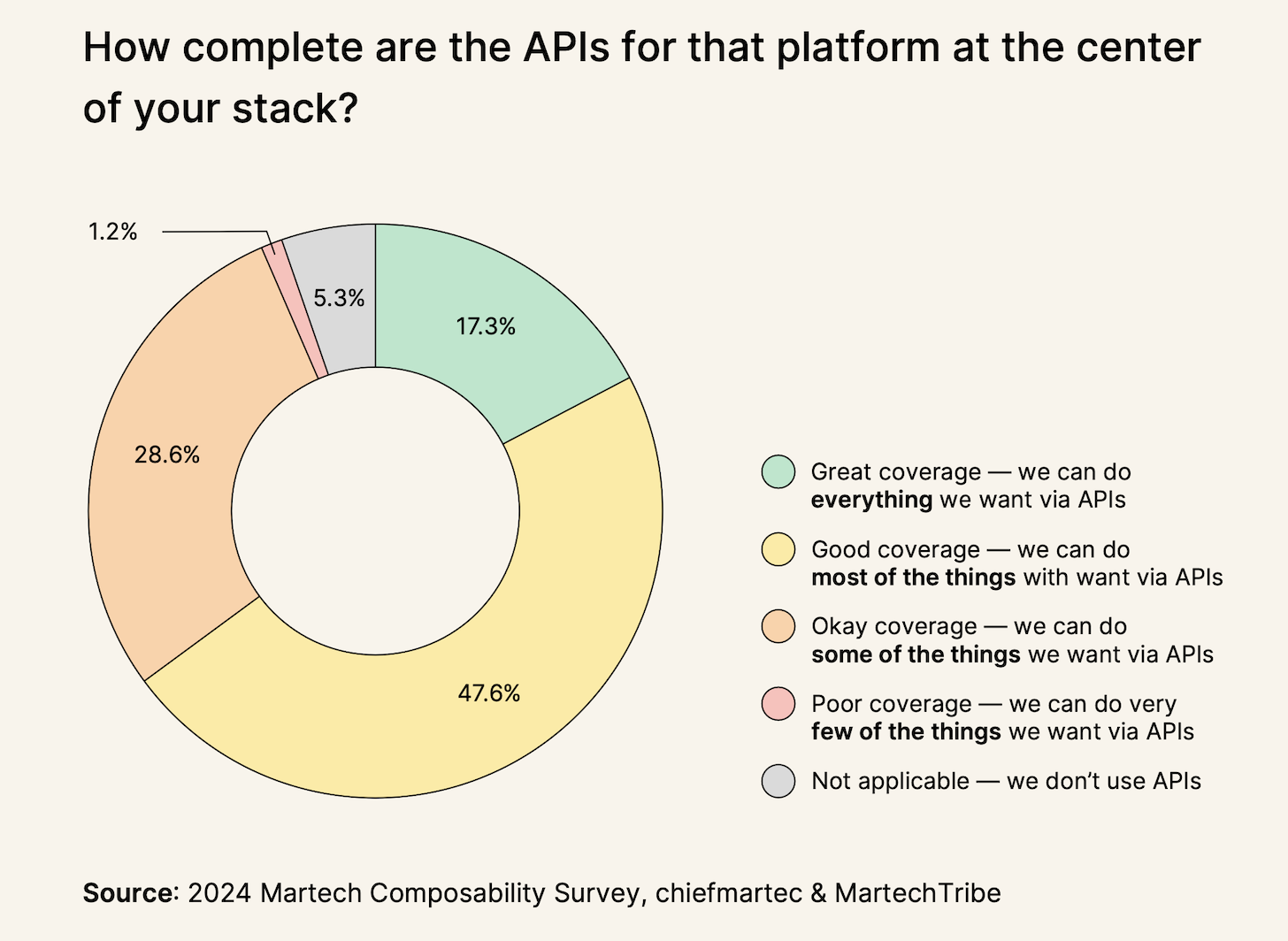
Memo to martech vendors: this is an opportunity for competitive advantage. Having better APIs for your product is a way to distinguish yourself from your competitors. You can enable your customers to do more automations — and soon more AI agent magic — by providing great programmatic interfaces to your product’s functionality.
Because increasingly, your users aren’t just going to be humans. They’re going to be automations and agents operating on behalf of humans. But just as your closed/lost or churn risk increases if a human user can’t work with your product, you can expect the same risk will rise if their “artificial users” can’t either.
Now, some martech vendors might be worried that enabling greater API access to their functionality will reduce the usage of their human-oriented UI. Since human attention is extremely limited and highly valuable, there is an incentive to want to catch and hold on to as much of it as possible. It might be tempting to say, “No, you can only unlock the power of our product by giving us your full attention as a human in our UI.”
For most products, I think that would be a mistake.
Yes, human attention is valuable. But it’s not the only source of value for a vendor. As an army of AI agents thunders across the field, those vendors who are able to empower such artificial users will have greater usage than those who don’t. In the Age of AI, usage is even more important than UI. Increasingly, this will be how most martech products monetize.
The Age of AI will also be the Age of APIs.
For more important martech trends and insights — including deeper analysis of APIs and composability in martech stacks — pick up a copy of our 101-page The State of Martech 2024 Report. You can register for a free copy to be emailed to you here. (Thank you again to our sponsors: GrowthLoop, MoEngage, SAS, Syncari, and WordPress VIP.)
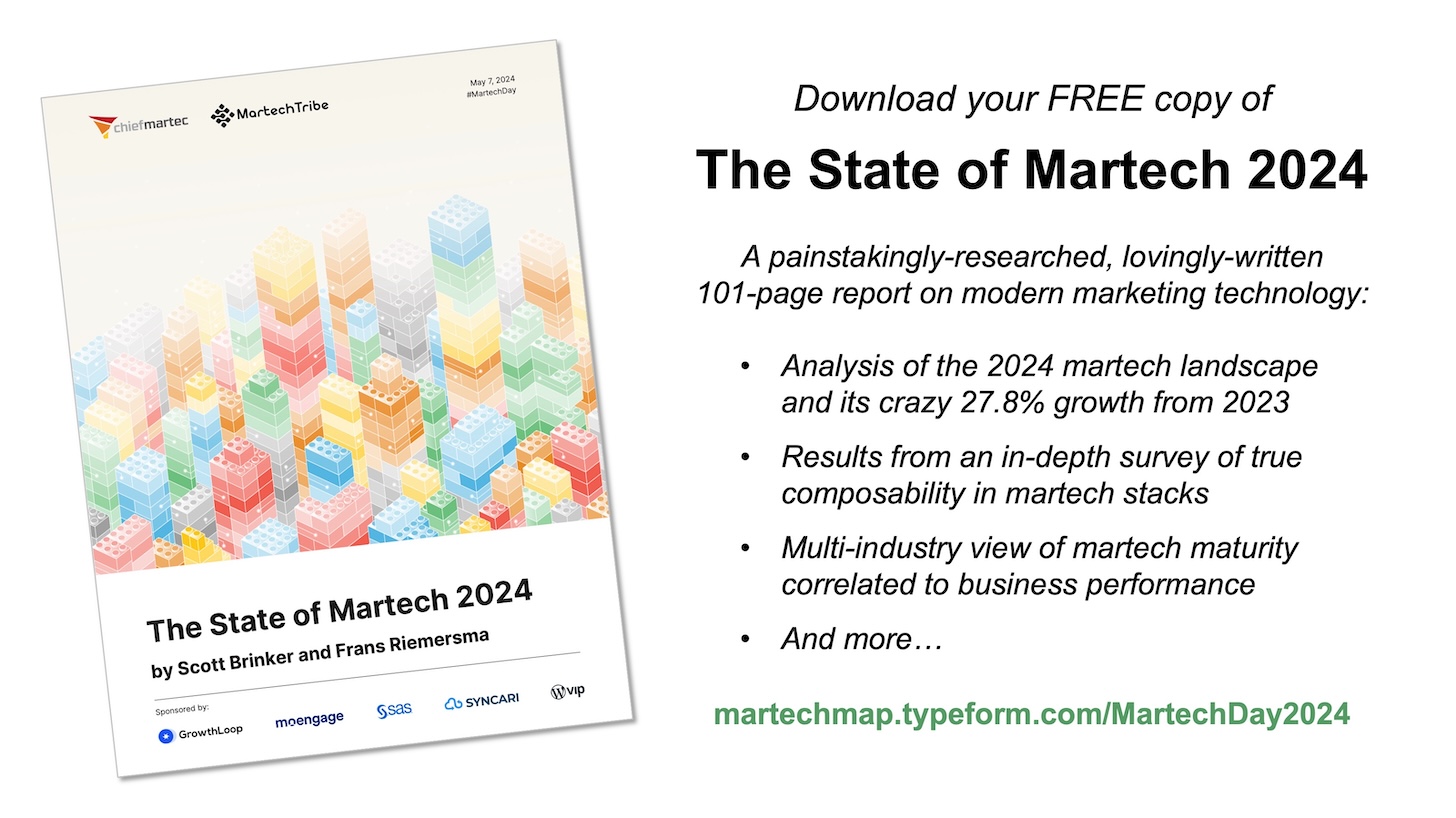
Get chiefmartec.com directly in your inbox!
Subscribe to my newsletter to get the latest insights on martech as soon as they hit the wire. I usually publish an article every week or two — aiming for quality over quantity.



